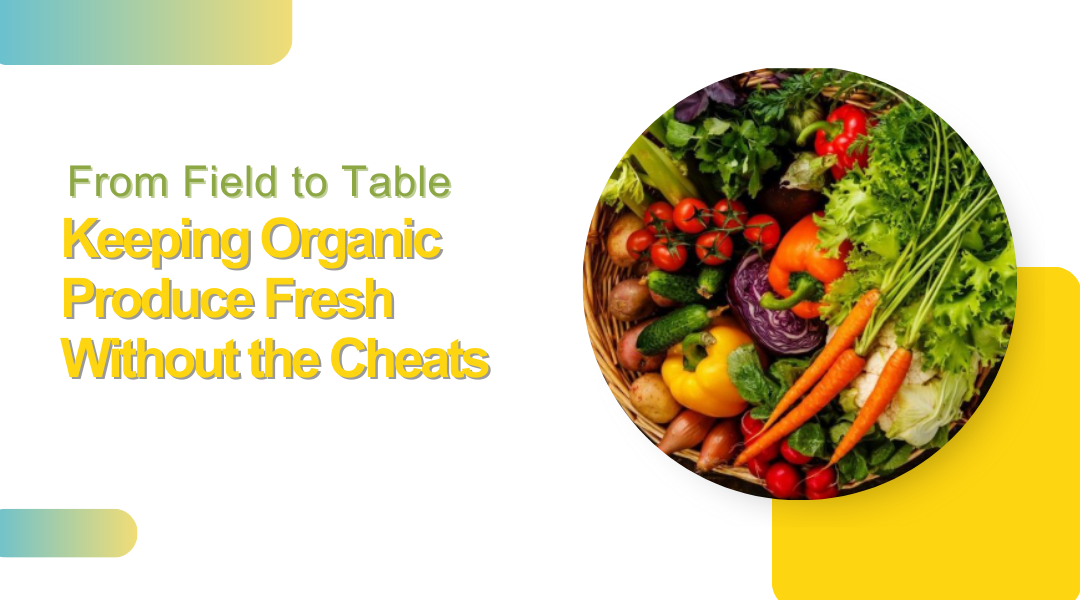The Harvest Tightrope Walk
There’s a heart-pounding moment every organic grower knows: that split-second decision when you’re holding a sun-warmed tomato, weighing whether today’s the day. Pick too early, and you get cardboard-flavored disappointment. Wait too long, and it’s a squishy mess for the compost pile. Organic harvesting isn’t just about pulling food from the ground—it’s about catching each crop at its fleeting moment of perfection, then keeping it that way without chemical shortcuts.
Reading Nature’s Harvest Signals
The Snap Test
- Green beans should crack not bend
- Peas rattle in their pods when ready
The Scent Check
- Cantaloupe’s sweet perfume means “pick me now”
- Basil loses its punch if harvested after flowering
The Squeeze (Gentle!)
- Eggplants should bounce back slightly
- Watermelons give a dull thump when ripe
Pro Tip: Carry a refractometer ($50 on Amazon) to measure sugar content in fruits. Brix levels don’t lie.
Harvest Hacks That Actually Work
Timing is Everything
- Leafy greens: Cut at dawn when crisp with dew
- Root veggies: Dig after sunset when sugars concentrate
- Berries: Never pick wet (they’ll mold in hours)
Tools of the Trade
- Japanese hori-hori knife for clean root cuts
- Chicken shears for thick-stemmed kale
- Game changer: Silicone thumb guards for garlic harvesting
The Continuous Harvest Trick
For zucchini, beans, and cukes:
- Harvest every 48 hours
- Always take the biggest first
- Miss one? Let it grow for seed saving
Post-Harvest Jedi Moves
Washing Without Regrets
- Delicate greens: 3-minute ice bath with 1 cup vinegar per gallon
- Root crops: Dry brush > rinse > air dry completely
- Never wash: Garlic, onions, or winter squash (invites rot)
The Sorting Secret
Set up three bins:
- Market perfect (front table material)
- Processing grade (sauce candidates)
- Compost confessional (be ruthless)
Storage Smarts
- Apples: Single layer in cardboard, away from potatoes
- Carrots: Bury in damp sand in a trash can
- Tomatoes: Stem-side down on newspaper (never fridge!)
Packaging That Doesn’t Betray Your Values
For Market Stands:
- Mushrooms: Wax-lined paper bags (plastic sweats them)
- Greens: Recycled plastic clamshells (washed and reused)
- Berries: Paddle-stitched birchwood baskets ($0.35 each)
Wholesale Solutions:
- Compostable PLA liners for bulk root veggies
- Upcycled grain sacks for potatoes/onions
- Edible wax coating for citrus (beeswax + coconut oil)
Labeling Right:
“Picked Thursday AM” stickers build trust faster than any organic certification logo.
When Things Go Wrong (And They Will)
Salvage Operations:
- Wilted greens: Revive in iced honey water (1 tsp/gallon)
- Scratched apples: Dip in lemon juice, sell as “pie-ready”
- Overripe tomatoes: Roast same day for freezer paste
The 5-Minute Rule:
Any produce that won’t last 48 hours gets:
- Donated to food bank
- Fed to livestock
- Fermented/pickled
The Real Reward
Nothing beats the pride of handing a customer a just-picked strawberry that actually tastes like a strawberry should. That’s the magic of nailing organic post-harvest—you’re not just selling food, you’re delivering a memory of how nature intended things to be.
